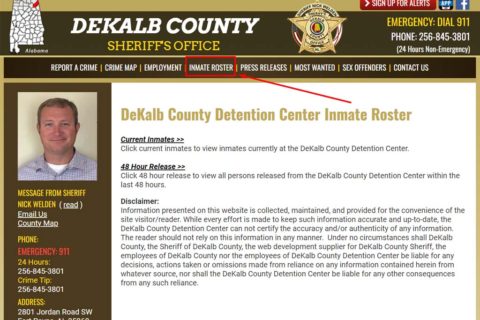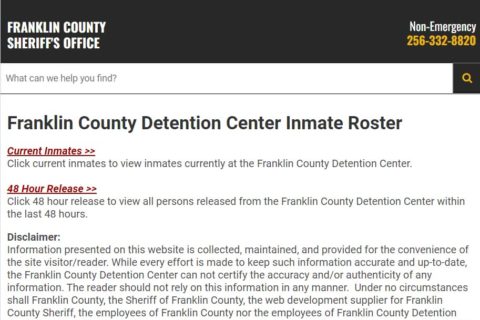When someone is released from custody and returns to society, there will be challenges that they have to face, especially when they have been in custody for a long time. It is undeniable that someone who is released and finds it hard to live again in society will return to criminal behavior as before.
That’s why correctional facilities set release for each prisoner by looking at several factors, such as the sentences served, the nature of the offense, the individual’s behavior while incarcerated, and any legal considerations.

Well, there are some types of releases that someone may get when released from custody. However, the specific types of releases will vary in every facility since they will be based on the laws and regulations of each jurisdiction and the individual circumstances of the case.
The following are the types of releases from jail:
1. Unconditional Release
Unconditional release refers to a release against a prisoner who has completed their entire sentences and the end of the custody term that has been determined. They will be released without any further conditions or requirements. In other words, this is the full release that a prisoner receives. In addition, it will also apply to prisoners who are considered too dangerous to return to society under statutory release.
2. Parole
Someone who receives parole will be required to serve the remainder of their sentence under supervision in the community. It is given by the Board of Parole (BOP) before the expiration of the offender’s sentence. When a prisoner receives parole, a parole officer will supervise them until their sentence is over.
Of course, a prisoner needs to adhere to specific conditions and regularly report to a parole officer. Before release to parole supervision, a prisoner may have pre-release requirements that they should successfully complete. For example, they are willing to attend and complete various classes such as group therapy, pro-social life skills, or community therapy.
There are two types of parole that an inmate may receive, including:
-
Day Parole
An inmate may receive day parole if they have the opportunity to take part in ongoing community-based activities. To perform the activities, they may live at a correctional facility or community-based residential facility. Day parole will also be given to an offender before they serve full parole and statutory release.
-
Full Parole
It is different from day parole, which allows an inmate to take part in the community but still stay in prison. Full parole instead requires an inmate to serve part of a prison sentence in a community where they will be supervised and need to comply with various design requirements.
Well, these aim to reduce the risk of re-ordering and encourage the reintegration of the offender into the community. During full parole, an inmate shouldn’t return nightly to a correctional facility; they instead have to report regularly to a parole supervisor, a.k.a. police officers.
3. Probation
Probation is a type of conditional release given by a court to someone found guilty of a crime as a substitute for or after serving a sentence in prison. It is subject to the supervision of the Department of Correction.
Someone who receives probation can be placed in split confinement. Well, before being released to probation, they have to spend some time in jail, or they should even be sentenced to probation directly.
During the probationary period, the individual must make a report to a parole officer within 48 hours of being placed on probation or of release from separate confinement. Of course, they need to follow the terms and conditions of probation as listed on the probation order.
4. Temporary Absence
An individual incarcerated may be released regardless of the temporary absence. Usually, the correctional institutions will grant temporary absences to offenders if they are considered to have a low risk of committing another offense during their absence. But it should also remain within the framework of the prisoner’s correctional plan.
There are some circumstances under which someone may receive a temporary absence, including:
- Bail release: It applies to an offender who gives money to the court as a guarantee that they will appear for all necessary court hearings.
- Medical release: An offender may be released from jail for medical reasons. If they really have a serious medical condition that may not be possible to treat within the jail, they may be granted early release.
- Compassionate Release: It will be given to inmates who have demonstrated good behavior or have specific conditions that warrant an early release.
- Community service: When an inmate is released from jail, they need to adapt to returning to the community. Before they are really part of society, they may need to prepare and do the work in the community as an act of service. So, it can be called gradual release under supervision, which can help the offenders return to society in a better way.
- Pretrial Release: It may occur while an offender is awaiting trial and has not been convicted of any crime. It may involve bail or other conditions set by the court, depending on the case and jurisdiction.
5. Statutory and Supervised Release
Most prisoners in federal correctional facilities can be released in the final third of their sentence, which is known as statutory release. Of course, they are supervised for the rest of their sentences, like full parole.
However, if someone serving a federal sentence is deemed highly dangerous, they may not be granted statutory release before their sentence expires. Well, here are the criteria for inmates who are eligible for statutory release:
- An offender did not apply for parole,
- An offender was denied full parole.
However, the court may issue a detention order if the following things occur:
- An inmate commits an offense that causes serious injury or death.
- Inmate committed a sexual offense involving a child, or
- An inmate committed a serious drug offense.
If inmates commit those things above, they will remain in prison after their statutory release.

A bookworm and researcher especially related to law and citizenship education. I spend time every day in front of the internet and the campus library.




